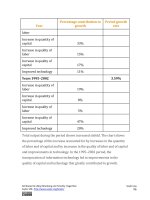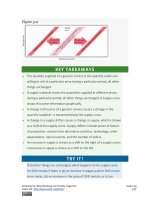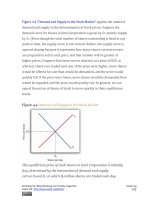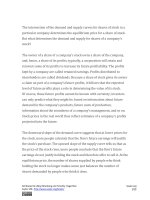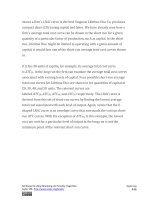Authors libby rittenberg 770
Bạn đang xem bản rút gọn của tài liệu. Xem và tải ngay bản đầy đủ của tài liệu tại đây (425.24 KB, 1 trang )
processor to buy raw milk from dairy farmers in a particular area. By
forming a cooperative, farmers could counter the monopsony power of a
processor with monopoly power of their own, creating a bilateral
monopoly.
Today, with much lower transportation costs, dairy farmers can deal with
a national market so that processors no longer have monopsony power.
But dairy farmers continue to have the right to form cooperatives. As we
have seen in an earlier chapter, dairy farmers also enjoy protection from
federal programs that are designed to keep dairy prices high.
KEY TAKEAWAYS
A firm that has monopoly power in the supply of a factor makes
choices in the same manner as any monopoly firm; it maximizes profit
by selecting a level of output at which marginal revenue equals
marginal cost and selling that output at a price determined by the
demand curve.
Unions have traditionally sought to raise wages and to improve
working conditions by exerting market power over the supply of labor.
In bilateral monopoly, a monopsony buyer faces a monopoly seller.
Prices in the model are indeterminate.
Professional associations often seek market power through their
influence on government policy.
Producers’ cooperatives, a form of legal cartel, have been organized in
some agricultural markets in an effort to offset the perceived
monopsony power of some buyers of agricultural products.
TRY IT!
Attributed to Libby Rittenberg and Timothy Tregarthen
Saylor URL: />
Saylor.org
770
